
Palmaria palmata, also called dulse, dillisk or dilsk, red dulse, sea lettuce flakes, or creathnach, is a red alga (Rhodophyta) previously referred to as Rhodymenia palmata. It grows on the northern coasts of the Atlantic and Pacific Oceans. It is a well-known snack food. In Iceland, where it is known as söl, it has been an important source of dietary fiber throughout the centuries.

Alaria esculenta is an edible seaweed, also known as dabberlocks or badderlocks, or winged kelp, and occasionally as Atlantic Wakame. It is a traditional food along the coasts of the far north Atlantic Ocean. It may be eaten fresh or cooked in Greenland, Iceland, Scotland and Ireland. It is the only one of twelve species of Alaria to occur in both Ireland and in Great Britain.

Ceramium is a genus of Ceramium algae. It is a large genus with at least 15 species in the British Isles.

Polysiphonia lanosa is a common species of the red algae (Rhodophyta) often to be found growing on Ascophyllum nodosum.
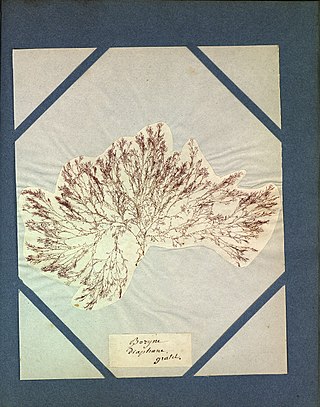
Ceramium diaphanum is a species of marine red algae.
Polysiphonia furcellata (C.Agardh) Harvey is small marine red alga in the Division Rhodophyta.
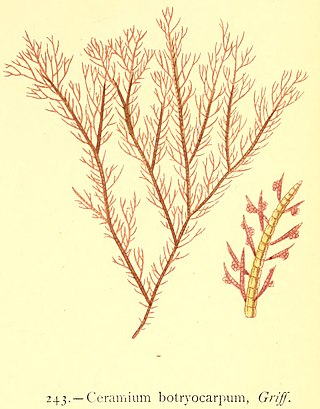
Ceramium botryocarpum is a small red marine alga in the Division Rhodophyta.

Ceramium echionotum is a small marine alga in the division Rhodophyta.
Ceramium flaccidum is a small red marine alga in the Division Rhodophyta.

Ceramium ciliatum is a small marine red alga in the Division Rhodophyta.
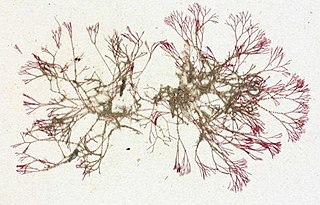
Ceramium cimbricum is a small red alga in the division Rhodophyta.
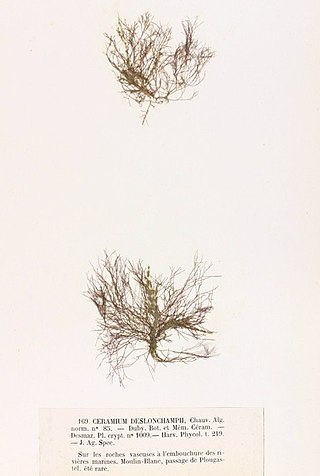
Ceramium deslongchampsii is a small marine red alga in the Division Rhodophyta.

Ceramium gatitanum is a small marine red alga.
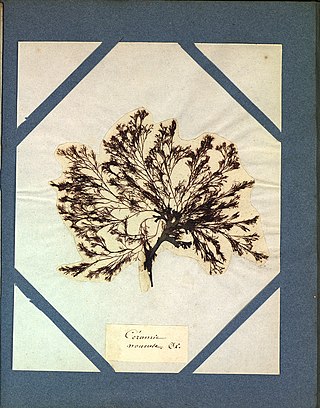
Ceramium nodulosum is a small red marine alga. There is confusion surrounding this name.
Ceramium pallidum is a small marine alga. It occurs in waters off of Europe and Africa (Morocco).
Ceramium secundatum is a small marine red alga.

Ceramium shuttleworthianum is a small marine red alga.

Ceramium virgatum, or the red hornweed, is a small red marine alga.
Brongniartella byssoides Schmitz is a small red marine alga.

Prasiola crispa is a small terrestrial green alga. It has been recorded world-wide mostly from cold-temperate to polar regions.













